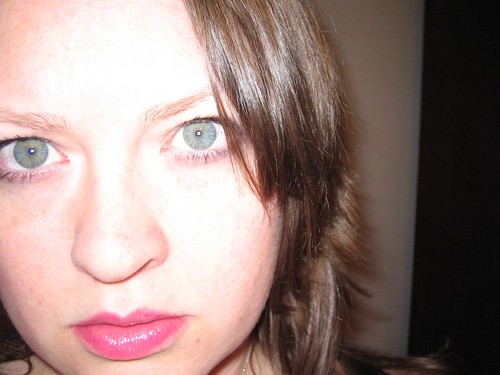I started reviewing a couple of magazines a few weeks ago, when I was sick. Being sick gives me cabin fever and as soon as I felt safe to leave the house, I ran out to grab some trashy magazines to read in bed. I got sidetracked when I saw two titles I'd never heard of before, both marketed to the professional woman. I figured that my WB television habit and propensity to car-dance to 50 Cent aside, I fit that demographic. Here are my brief reviews:
BeE Magazine ("For the woman who is interested in politics, lifestyle, & finance")
Quarterly, launched October 2005.
I don't really approve of its intercapped name, but BeE is a pleasant surprise. Topics covered in the second issue include the second installment of a two-part piece about a woman making over her financial life and a discussion of the relative merits of voting green and buying green. I was really impressed with the quality of the writing and the usefulness of the content. I could do without the odd piece on spring/summer fashion trends, but for the most part, I enjoyed reading a women's magazine that addresses its readers as women rather than ditzy bimbos with lots of disposable income. The website describes the BeE reader as "active, hardworking, educated women—either at home or in the office—between the ages of 25–54," which sounds about right, based on the content. Here's the BeE case study from Magazine Launch, if you're interested in more about the target audience, marketing strategies, and the like. I agree with the magazine's founders that BeE is different from other women's and lifestyle magazines out there, and I do hope it survives.
I couldn't find much, but here are some other takes on BeE:
Tim Rogers at D Magazine doesn't care for the design and enjoyed one article.
Nichell Stephens of Nichelle Newsletter will support the magazine "as long it doesn't dissolve into silly odd-number lists for beauty and sex tips."
PINK ("A beautiful career, a beautiful life")
Bimonthly, launched June/July 2005.
When I grabbed Pink and BeE from the newsstand, I expected them to be really similar. I was wrong. Pink seems to be aimed at a more specific audience of women executives. The "about" page on the magazine's website sums this up:
"PINK exists to promote this new generation of women who are making a significant impact on the world through their work and their lives-while being true to themselves. PepsiCo´s North American President Dawn Hudson is one such woman. She´s part of the growing coterie of America´s most influential women who are redefining what constitutes success (for men too) in the 21st century."
Reading through the magazine, I saw Pink's definition of a professional woman as much narrower than mine, limited to mid-level and higher corporate executives. There was very little content that resonated with my career in higher education or my life in general. Topics of articles in the December 05/January 06 issue include profiles of women running top advertising agencies and a forcast of "The Next 20" female CEOs of major companies. In short, it's really focused on private industry. I did appreciate some of the personal finance coverage both in the magazine and on the website and found the advice and explanations to be thorough and useful, but I don't see myself subscribing or even reading Pink in the future.
Other takes on Pink:
Pallavi Gogoi wrote a pretty in-depth article on Pink for Business Week
Elizabeth Albrycht of CorporatePR doesn't care for the title and wishes they had a blog. The comments on her post are worth a look, too.
The anonymous blogger at MBA-Women calls Pink's articles "informative and inspiring."
Linda Locke, editor of Moms in Business liked the content and finds it interesting
Ulrich's doesn't have much information on either title yet, so I don't know if, where, or when they might be indexed electronically.
Subscribe to:
Post Comments (Atom)










No comments:
Post a Comment